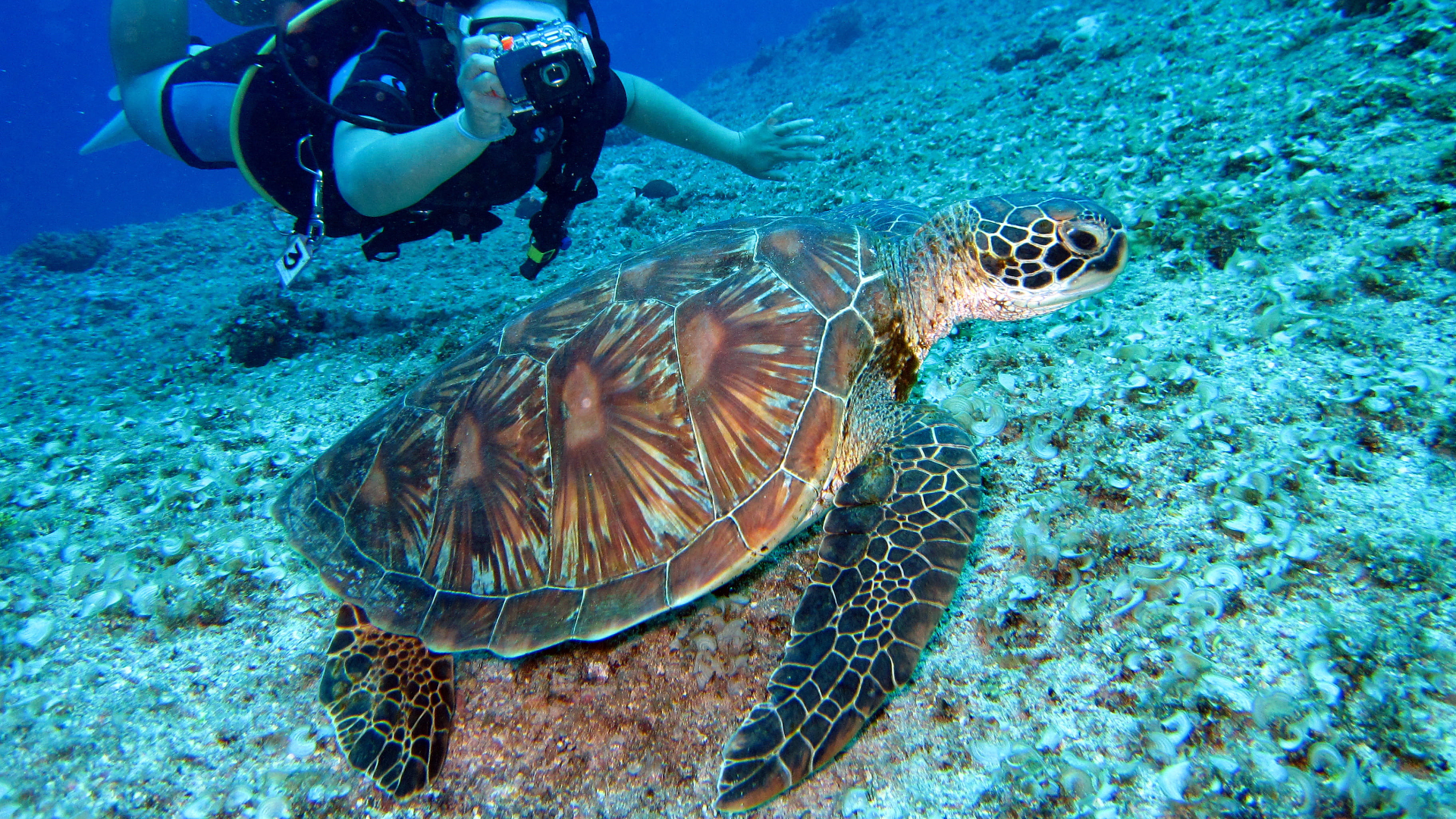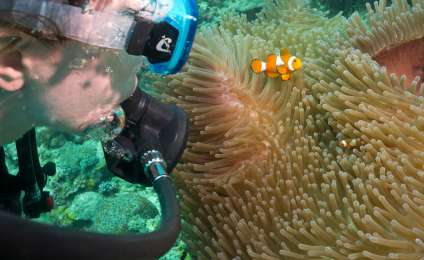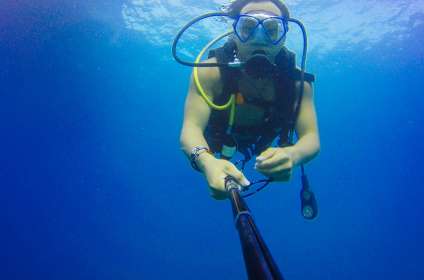How to take underwater photos
Published: 21.07.2020

Few people know how to shoot underwater to get cool photos. We will tell you how to easily and simply take photos underwater.
Underwater photography, like sports, requires practice and perseverance. Be prepared to keep trying again and again, endure failures, adapt, and learn. Unlike photography on land, underwater photography is much more challenging. But, when you look at the fantastic images that can be obtained in the end, it becomes clear that the struggle is worth it.
Underwater photographers have their own rules and secrets. But if you are a beginner in underwater photography, a few tips and tricks for beginners will help you use locations in a completely different dimension. While others look with envy and admiration at the amazing shots, familiarize yourself with our recommendations, grab your underwater camera, and dive for extraordinary shots.
Feel comfortable underwater
In the water, you should feel as comfortable as possible. For those who do not have a scuba diving certificate, it is necessary to work on skills such as breath-holding, free diving, and swimming with a mask and snorkel. The ability to swim well, and in some cases quickly, is an important requirement for underwater photographers.
Test range
Turn the pool into a testing ground for underwater photography. No matter how well you move underwater, photography equipment will limit your movement. Photography gear needs to be tested, moved, and adjusted. By practicing photography techniques in the pool, you will quickly grasp the basics of underwater photography and be able to transition to open water quickly.
Study light and color
Those who are not familiar with underwater photography do not realize that light and color are quickly lost in the water environment. Shooting through water is difficult because water filters out light, which in turn affects your photos. Red, orange, and yellow are the first colors you lose underwater. They are followed by green and purple. The last color you lose underwater is blue.
Create a Light album from cool photos. You don't need to print the photos separately. We will print your photos directly on the pages of the Light album. Upload images to the free editor Mapi7 and create a thematic Light album. You can upload photos from your phone.
Light travels a long way in the underwater world. To restore lost color and bring underwater photos to life, strobes are necessary. You may have the best camera in the world, but if you don't pair it with decent lighting, your photos will be dull, monochromatic, and blurry.
If you don't have strobe lights - buy them, if you have strobe lights but don't use them - learn how to.
Grow gills :)
This is definitely a joke. But, in every joke... Capturing captivating images is a challenging task in itself. Combining photography with underwater diving seems impossible.
Control your buoyancy, monitor your breathing, orient yourself underwater, watch out for dangers, keep an eye on your buddy. When you literally merge with the water, it's easy to set up the camera and focus solely on getting the perfect shot.
For beginner underwater photographers, it is important to spend as much time as possible underwater with or without a camera. This will help in learning to perform multiple tasks simultaneously and keeping safety a top priority.
Keep your distance
Forget about the central beaches. Regardless of the equipment you use, good underwater photos require crystal clear water. Maintain a distance of 1:10. If visibility is 12 meters, keep a distance of 1.2 meters in front of the object.
If you are using strobes, getting good and close-up shots will help capture the best details and reduce the likelihood of distortion. So get as close as possible and fill your frame with the subject.Macro photographyUnderwater - more relevant than ever.
Close-up shooting is a great opportunity to create a separate.Album Lightdedicated to underwater creatures.
Appreciate contrasts
Want to make your photos cool? Find aquatic creatures that stand out from their surroundings to draw attention to the subject you are photographing.
Green on red, solid color on a patterned background, a colorful mollusk with the silhouette of a diver in the background... Capture in the lens everything that stands out from the perfect underwater picture.
Whenever possible, sit down and take photos from below, looking up. This low position creates a layering effect in the image, isolating your subject from the thickness of the water. Unlike a chaotic deep-sea landscape, a subject photographed from below will not get lost in the colorful marine kingdom. A colorful coral, captured from below, will stand out beautifully against the mystical blue background. However, shooting the same coral from above will result in a blurry image.
Allow me to introduce myself
Almost every underwater photograph is taken at a certain distance from the subject. This means that you must be able to maneuver around the subject in such a way as not to scare it away. Fussing around an underwater creature will only result in seeing the tails of marine life. If you are calm and at one with the environment, you will have a great encounter with a personal acquaintance. And that's what makes for good photos.
Ask the locals about the peculiarities of the underwater flora and fauna. Don't hesitate to ask questions. The information you receive will help you save time searching for amazing locations and allow you to start taking photos right away.
Unity with nature
Marine creatures mostly are not afraid of humans. But they do not like it when approached quickly. Therefore, in order to get as close as possible to the subject and take a great photo, do not rush. Otherwise, you will scare the living creature away.
If an object is slowly passing by you, swim parallel to it and slowly reduce the distance between you.
Cool photos deserve unique framing. Print your cool pics in Polaroid style. Fans of instant photography from the 90s may experience familiar feelings holding a Polaroid-style photo in their hands. Those unfamiliar with traditional Polaroids will enjoy square images with space for captions.
Water is a great place for creative photography. Like any type of photography, underwater shooting requires time, practice, and patience. As you master our tips and recommendations, you will capture amazing shots of underwater life. The underwater world is so fascinating and diverse that all you have to do is focus and enjoy.











